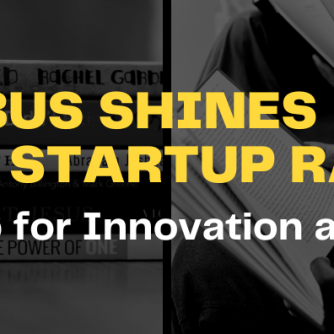Table of Contents
Introduction
In the ever-evolving era of technology, companies are engaged in a fierce battle for the best minds. The demand for tech talent is at an all-time high, and the competition to attract and retain top-tier professionals is more intense than ever. In this comprehensive blog, we’ll delve deep into the strategies that companies are employing to win the tech talent war. We’ll also provide you with key statistics, FAQs, and actionable insights to help you stay ahead in this relentless race for talent.
The Battlefield: Tech Talent Scarcity

The Rising Demand for Tech Talent
In today’s digital age, technology is the backbone of nearly every industry. From artificial intelligence to cybersecurity, companies are investing heavily in tech to stay competitive. As a result, the demand for tech talent has skyrocketed. According to a report by the Bureau of Labor Statistics, employment in computer and information technology occupations is projected to grow by 13% from 2020 to 2030, faster than the average for all occupations.
This growth is not limited to the United States. Globally, businesses are witnessing a similar trend. The World Economic Forum highlights that digital skills are now critical in almost all industries, with the demand for tech-savvy professionals on the rise worldwide.
The Consequences of Talent Shortage
With such high demand, it’s no surprise that a tech talent shortage has emerged. According to a survey by the ManpowerGroup, 69% of employers globally reported talent shortages in 2020, with IT roles being among the hardest to fill. This scarcity of talent has far-reaching consequences, including project delays, increased labor costs, and reduced competitiveness.
In the United States alone, the skills gap is projected to result in 85.2 million unfilled jobs by 2030, with a potential economic cost of $8.5 trillion, as stated in a report by Korn Ferry.
Columbus, Ohio, is emerging as a vibrant tech hub, attracting major investments from industry giants like Intel, Google, and Wells Fargo. These investments not only bolster the city’s technological infrastructure but also generate a significant demand for tech talent. In this overview, we will delve into Intel’s semiconductor project in Columbus, explore its commitment to a diverse workforce, and examine how Google and Wells Fargo’s investments in data centers and innovation hubs are amplifying the call for skilled professionals in the region.
Intel’s Semiconductor Project in Columbus, Ohio
Intel, a global leader in semiconductor manufacturing, is currently channeling substantial resources into a semiconductor project in Columbus. This endeavor, with its multi-billion-dollar price tag, is primarily focused on advancing chip manufacturing and holds the promise of enhancing Ohio’s technological ecosystem and contributing to the state’s economic prosperity (Ohio Department of Job and Family Services, 2022).
Tech Talent Demand:
The Intel project has sparked a remarkable demand for tech talent within Columbus. According to data from the Ohio Department of Job and Family Services, the state witnessed a notable 22% surge in tech job postings in 2022, a surge largely attributed to Intel’s expansion (Ohio Department of Job and Family Services, 2022).
Intel’s Commitment to a Diverse Workforce
Beyond its technological pursuits, Intel is deeply committed to promoting diversity and inclusivity within its workforce. This commitment extends to its Columbus operations, where Intel endeavors to boost the representation of women and underrepresented minorities. The company has invested significantly in programs and partnerships aimed at achieving this objective (Intel, 2023).
Impact of Google and Wells Fargo Investments
Google and Wells Fargo have also recognized the potential of Columbus as a tech powerhouse and have consequently made substantial investments in the city.
Google’s Data Center:
Google’s operational data center in Columbus, established in 2022, has not only generated employment opportunities but also drawn tech professionals to the city. This data center forms part of Google’s broader $13 billion investment in data centers and offices across the U.S. (Google, 2022).
Wells Fargo’s Innovation Hub:
Wells Fargo’s innovation hub in Columbus further underlines the city’s growing tech ecosystem. By facilitating collaboration with local tech talent, universities, and startups, it reinforces the need for skilled professionals in the region (Wells Fargo, 2022).
In conclusion, Intel’s semiconductor project, in tandem with Google and Wells Fargo’s investments, has significantly escalated the demand for tech talent in Columbus. Moreover, Intel’s dedication to diversity underscores the importance of fostering an inclusive workforce as Columbus continues to flourish as a tech innovation hub.
Strategies in the Tech Talent War

Employer Branding and Culture
One of the most effective ways companies are attracting tech talent is by building a strong employer brand and fostering a positive workplace culture. Tech professionals are not just looking for a job; they seek a place where they can thrive and be part of something meaningful.
Showcase Your Company’s Values
Companies that emphasize their values and mission tend to attract talent that resonates with their purpose. Highlight your commitment to innovation, diversity, sustainability, and social responsibility in your employer branding efforts.
Consider the example of Google, which has consistently ranked high in employer brand surveys. Their “Don’t Be Evil” motto and commitment to creating a positive impact on the world have been powerful magnets for top tech talent.
Create an Inclusive Environment
Diverse and inclusive workplaces are more appealing to tech talent. Foster an environment where everyone feels welcome and valued, regardless of their background, gender, or ethnicity.
Microsoft’s inclusive culture initiative, led by CEO Satya Nadella, serves as an inspiring case study. The company’s dedication to diversity and inclusion has not only attracted top talent but also improved innovation and product development.
Competitive Compensation Packages
In the tech talent war, competitive salaries and benefits are table stakes. Companies that offer attractive compensation packages have an edge in attracting top talent. Consider offering:
Competitive Salaries
Research industry standards and offer competitive salaries that reflect the skills and experience of your tech candidates.
Tech giants like Apple are known for their generous compensation packages, including high base salaries, bonuses, and stock options. This approach helps them consistently secure top talent.
Comprehensive Benefits
Tech professionals often value benefits such as health insurance, flexible work arrangements, and professional development opportunities. Include these perks in your compensation package to stand out.
Facebook, now Meta, is an example of a company that provides extensive benefits, including top-tier healthcare, retirement plans, and access to resources for personal and professional growth.
Unlocking Work-Life Balance for Millennials in Columbus, Ohio:
In Columbus, Ohio, companies are making significant strides to accommodate the needs of the millennial workforce, particularly in terms of childcare and work-life balance. Here are some prime examples of local businesses in Columbus that are championing initiatives to support millennials in achieving a harmonious blend of their personal and professional lives.
Nationwide Insurance:
Columbus-based Nationwide Insurance offers its employees a range of childcare support initiatives, including on-site childcare facilities and a childcare subsidy program. These efforts help millennial parents balance their work and family responsibilities effectively.
Root Insurance:
Root Insurance, a tech-focused company in Columbus, has adopted a four-day workweek to enhance work-life balance. This policy resonates with millennial employees and has been well-received within the organization.
CoverMyMeds:
CoverMyMeds, a healthcare technology company headquartered in Columbus, prioritizes remote work options, allowing millennials and parents to manage their work responsibilities while catering to childcare needs at home.
Huntington Bank:
Huntington Bank, a prominent financial institution in Ohio, offers generous parental leave policies that support millennial parents during the critical early stages of parenthood.
Cardinal Health:
Cardinal Health, with its strong presence in Ohio, provides Employee Assistance Programs (EAPs) that encompass childcare and family support services, catering to the well-being and work-life integration needs of its millennial workforce.
In Columbus, Ohio, these companies exemplify a commitment to meeting the childcare and work-life balance expectations of millennials while fostering a supportive and employee-centric work environment.
Columbus, Ohio Cost of Living:
Overall Cost: The cost of living in Columbus, Ohio, is 10% lower than the national average. This means that residents of Columbus generally spend less on their basic expenses compared to the average American.
Housing, Utilities & Transportation:
Housing: Housing expenses in Columbus are 20% lower than the national average. This includes costs associated with renting or buying a home.
Utilities: Utility prices, which encompass electricity, water, and other basic services, are 7% lower than the national average.
Transportation: Transportation expenses, including bus fares and gas prices, are 10% lower than the national average in Columbus.
Food & Grocery:
Columbus has grocery prices that are 3% lower than the national average. This includes essential items like bread, milk, eggs, bananas, and meat.
Healthcare:
Healthcare costs in Columbus are 13% lower than the national average. This includes expenses related to doctor’s visits, dentist appointments, optometrist visits, prescription drugs, and veterinary care.
Implications for Startup Salaries:
Given the lower cost of living in Columbus, startup employees might find that their salaries go further in this city compared to places with a higher cost of living. While the base salary might be slightly lower than tech hubs like San Francisco, the reduced expenses in housing, utilities, transportation, groceries, and healthcare can result in a higher overall standard of living.
Columbus, Ohio, offers a favorable environment for startup employees in terms of cost of living. The reduced expenses in various categories mean that even if startup salaries are slightly lower than in major tech hubs, employees can still enjoy a comfortable lifestyle.

Skill Development and Training
Investing in skill development and training programs for your existing employees can be a winning strategy. When tech professionals see opportunities for growth and advancement within your organization, they’re more likely to choose you over other employers.
Continuous Learning
Offer access to online courses, workshops, and certifications to help your employees stay updated with the latest industry trends and technologies.
Amazon’s “Career Choice” program is an excellent illustration of this strategy. It offers hourly employees the opportunity to gain new skills and pursue in-demand careers, making Amazon an attractive option for those seeking career growth.
Internal Career Paths
Create clear career paths within your company, allowing tech talent to see how they can progress and take on more responsibilities over time.
IBM is known for its focus on internal mobility, with a culture that encourages employees to explore various roles within the company. This approach has not only retained talent but also fostered innovation.
Flexible Work Arrangements
The COVID-19 pandemic has reshaped work dynamics, and many tech professionals now prioritize flexibility in their work arrangements. Companies that offer remote work options or flexible schedules have a competitive advantage.
Remote Work Policies
Implement remote work policies that support collaboration and productivity, whether your employees are in the office or working from home.
Tech giants like Twitter have embraced remote work and announced permanent remote work options for their employees. This move has not only attracted remote-savvy talent but also expanded their talent pool globally.
Flexible Hours
Allow employees to have flexibility in their work hours to accommodate their personal lives and preferences.
Companies like Adobe offer flexible hours, recognizing that employees have different peak productivity times. This flexibility not only enhances work-life balance but also boosts overall job satisfaction.
Key Statistics in the Tech Talent War
Eye-Opening Statistics
To gain a deeper understanding of the tech talent war, let’s explore some key statistics:
According to a study by LinkedIn, the global tech industry saw a 24% increase in hiring in 2022 compared to the previous year.
The demand for cybersecurity professionals is exceptionally high, with a 31% year-over-year increase in job postings, as reported by Cybersecurity Ventures.
A survey by Gartner found that 32% of technology leaders are concerned about losing top tech talent to competitors.
In the United States, the average annual salary for a software engineer is approximately $112,620, according to the Bureau of Labor Statistics.
In Ohio, software engineer salaries typically ranged from $60,000 to $140,000 or more per year, with the average salary falling somewhere in the middle of that range, around $90,000 to $110,000 per year. Columbus, being the largest city in Ohio and having a growing tech industry, may offer slightly higher salaries on average compared to other parts of the state. However, it’s important to note that these figures are approximate and can change over time.
The global skills gap in the tech industry is estimated to cost the world economy $8.5 trillion by 2030, according to a report by Korn Ferry.

Frequently Asked Questions
Let’s address some common questions about the tech talent war:
Why is there a tech talent shortage?
The tech talent shortage can be attributed to the rapid growth of technology-related industries, an aging workforce, and a lack of qualified candidates with specialized skills.
How can small companies compete in the tech talent war?
Small companies can compete by offering a compelling company culture, remote work options, and competitive compensation packages tailored to their budget.
What role does networking play in attracting tech talent?
Networking is crucial. Attend industry events, engage with tech communities, and leverage employee referrals to connect with potential candidates.
How can companies retain tech talent in the long term?
To retain tech talent, focus on career development, offer regular feedback, and provide opportunities for innovation and growth within the company.
Conclusion: Winning the Tech Talent War
The tech talent war is a challenging battlefield, but with the right strategies and insights, your company can emerge victorious. By prioritizing employer branding, competitive compensation packages, skill development, and flexibility, you can attract and retain the best minds in the tech industry.
Keep an eye on the latest trends and adapt your approach as the tech landscape continues to evolve. In this ever-competitive arena, the companies that invest in their talent will undoubtedly come out on top.
As you navigate the tech talent war, remember that it’s not just about hiring the best minds but also nurturing and retaining them. The pursuit of talent excellence is an ongoing journey that can lead to sustained success in the dynamic world of technology.







